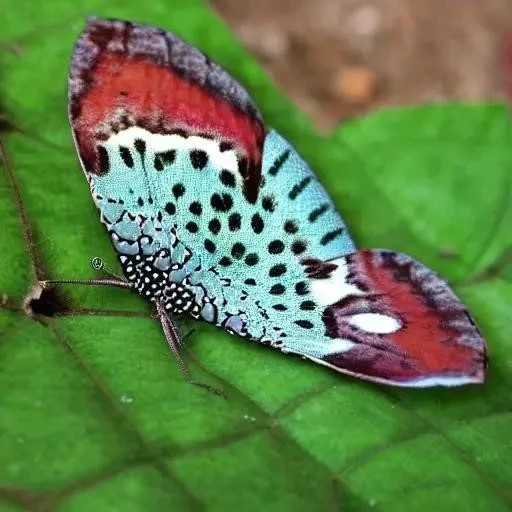
Today is 09/18/2025 09:07:10 ()
A silent, colorful invasion has been sweeping across our landscapes, threatening everything from backyard grapes to vital agricultural crops. The Spotted Lanternfly (SLF), Lycorma delicatula, a strikingly beautiful yet incredibly destructive invasive planthopper, first touched down in Pennsylvania in 2014, making its unwelcome debut in Virginia in January 2018. Since then, its relentless march has ignited a fierce, community-wide defense, with dedicated volunteers standing at the vanguard of this critical ecological battle. Homeowners, farmers, and environmental stewards are all recognizing the profound urgency of this threat, understanding that proactive engagement is not just beneficial, but absolutely essential for safeguarding our local ecosystems and economy.
This voracious pest, identifiable by its spotted tan wings and flashes of scarlet red underneath, has demonstrated an alarming capacity to feed on over 70 species of plants and trees, including economically significant crops like grapes, peaches, hops, and apples. Its presence leads to extensive damage, weakening plants, reducing yields, and coating surfaces in a sticky “honeydew” that fosters unsightly and harmful sooty mold. Regions like Frederick County, Virginia, and now, alarmingly, Northampton County, have become focal points in this ongoing struggle, mobilizing local expertise and community spirit. By integrating insights from state extension services and local conservation groups, a powerful resistance movement is being cultivated, driven by the invaluable efforts of organizations like the Northampton County Master Gardeners.
| Category | Information |
|---|---|
| Common Name | Spotted Lanternfly (SLF) |
| Scientific Name | Lycorma delicatula |
| Origin | Asia (First discovered in PA in 2014, VA in 2018) |
| Primary Host Plant Association | Tree of Heaven (Ailanthus altissima) |
| Affected Crops/Plants | Grapes, peaches, hops, apples, oaks, maples, walnuts, sassafras, wild cherry, mulberry, hackberry, and over 70 other species. |
| Damage Indicators | Honeydew secretions, black sooty mold on plants/surfaces, vinegar smell from fermenting honeydew, wilting plants, reduced crop yields; |
| Identification (Adult) | Approx. 1-inch long, 0;5-inch wide. Light-brown/grey forewings with black spots, scarlet red hindwings with black spots and white stripe. Yellow abdomen with broad black bands. |
| Identification (Nymphs) | First stage: black with white spots. Later stages: red patches over body, retaining white spots. |
| Identification (Egg Masses) | 30-50 eggs, 1-1.5 inches long, 0.5 inches wide, grayish-brown, covered with a waxy coating. Found on trees, rocks, outdoor furniture, vehicles. |
| Recommended Action | Scrape egg masses, trap nymphs, apply organic insecticides (pyrethrins, insecticidal soap, Neem oil) for adults/nymphs. Report sightings in non-established areas. Do not move infested plant material. |
| Reference Website | Loudoun County Master Gardeners ー Spotted Lanternfly |
Master Gardeners: The Unsung Heroes of Local Defense
Across the Commonwealth, and particularly in Northampton County, Penn State Master Gardeners are proving to be an incredibly effective frontline defense against the Spotted Lanternfly. These extensively trained volunteers, fueled by a passion for horticulture and community service, are actively monitoring for the insect, disseminating crucial identification tips, and sharing remarkably effective control strategies. Their roles extend far beyond simply answering questions; they are educators, citizen scientists, and community organizers, presenting informative talks to local groups and engaging residents in the hands-on fight. By empowering individuals with knowledge about SLF’s life cycle, from its distinctive egg masses to its adult form, Master Gardeners transform concerned citizens into active participants in eradication efforts, fostering a collective resilience against this formidable pest.
Strategic Intervention and Community Empowerment
The battle against the Spotted Lanternfly demands a multi-pronged approach. Master Gardeners emphasize early detection and destruction, particularly focusing on scraping egg masses found on trees, rocks, and even outdoor furniture between late fall and spring. For active nymphs and adults, they advise on targeted treatments using organic insecticides like pyrethrins, insecticidal soap, and Neem oil, which offer effective control without broadly harming beneficial insects. Furthermore, understanding the pest’s strong association with the Tree of Heaven (Ailanthus altissima) is paramount. By identifying and strategically removing or treating this preferred host, communities can significantly disrupt the SLF’s breeding cycle and limit its proliferation. This strategic intervention, coupled with widespread public awareness, forms the backbone of a successful containment strategy, meticulously planned and executed by dedicated volunteers.
A Collaborative Future: Protecting Our Green Spaces
The fight against the Spotted Lanternfly is a powerful testament to what can be achieved through collaboration. Virginia Cooperative Extension, the Virginia Department of Agriculture and Consumer Services (VDACS), and university experts like those at the University of Delaware and Ohio State University Extension, provide the scientific backbone and resources. Local Master Gardeners, however, are the vital conduits, translating complex research into actionable advice for everyday gardeners and homeowners. This synergy, bridging academic research with grassroots action, creates a robust network capable of tackling invasive species challenges. As we look ahead, continued vigilance, innovative research into biological controls, and sustained community engagement will be paramount. Our collective efforts are not merely about eradicating a pest; they are about preserving the ecological balance, protecting our agricultural heritage, and ensuring the enduring beauty and health of our cherished green spaces for generations to come. The future of our gardens and groves, vibrant and thriving, truly rests upon our unified, persistent commitment.
